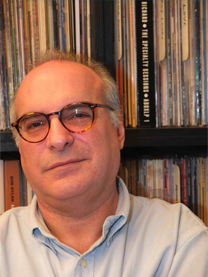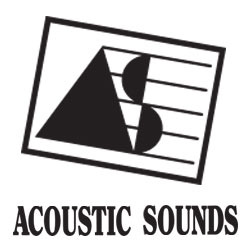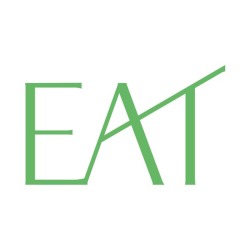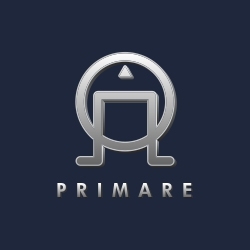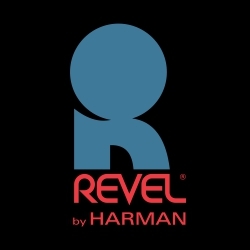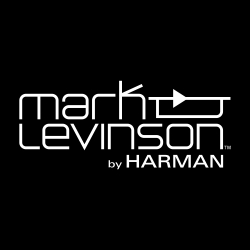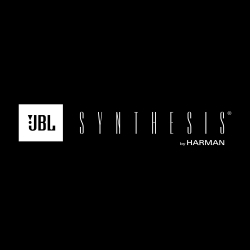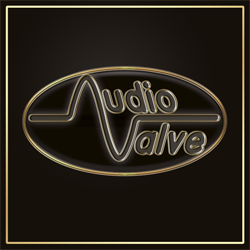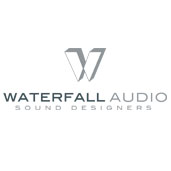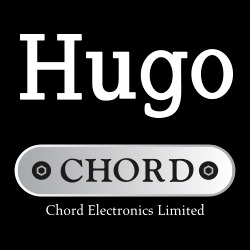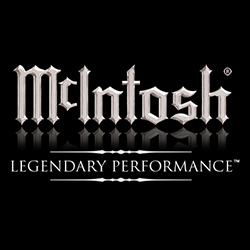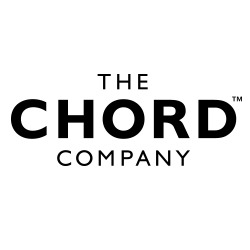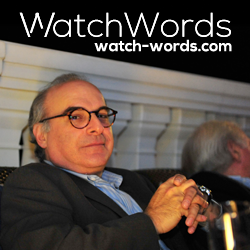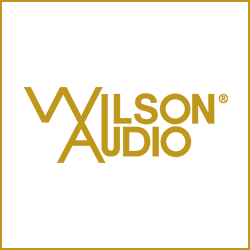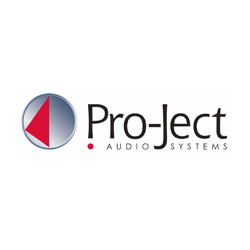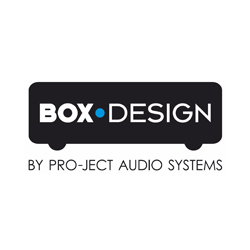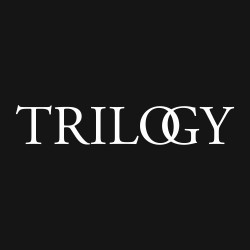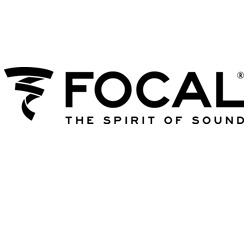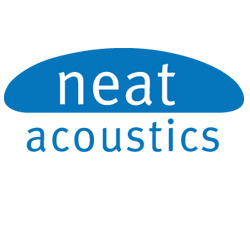Consumer Electronics Shows might rightly be all about new products ready for the shops, but an aspect that’s rarely covered in the hi-fi magazines is the industry manoeuvring. Whether or not it means anything to you if you don’t earn your living from hi-fi is another matter, but certain events which took place in January at the Las Vegas edition just might influence your audio future. Such affairs occur in and around the Show, often after hours, or – in the case of the AAHEA meeting – before hours.
This magazine’s connection to the Academy for the Advancement of High End Audio is supportive, given that Publisher Tony Catalano sponsors the breakfast at the semi-annual meetings in the names of Audio and Stereo Review. It looks good on the invitation, though few comment on it. Suffice to say, it’s this magazine’s (and Stereo Review‘s) way of helping one of the only organizations in the world which exists solely to promote high-end audio beyond the audience of the converted.
You don’t have to think hard to establish why we need it. The home entertainment scene has changed radically since digital technology stripped away the soul, the hobby element and the passion. The advent of home cinema? This is yet another attempt to turn audio equipment into mere appliances, divorced from any semblance of quality or intellect.
Meanwhile, AAHEA is fighting a rear-guard action designed to keep pure audio – that is, sound-only, music-for-music’s sake hardware – in front of the public. Pure audio will never again have the glamor it possessed in the 1960s and 1970s, and it can never compete in the minds of the knuckle-draggers who want five channels’ worth of Arnie-induced explosions, but some of us still like our music without cinematic accompaniment. Which almost explains why the most oft-heard demo disc at the Winter CES was the Eagles’ Unplugged in sound-only mode.
Whatever, the AAHEA meeting was a real ear-opener after a couple of years’ worth of ho-humminess. Ordinarily, one asks one’s self, “Why on earth did I get up for an eight o’clock meeting to listen to self-serving, yawn-inducing drivel about room prices at CES and parallel importing into Bucharest?” Good question. But, invariably, you always answer, “Because I care about the high-end audio industry.”
And so you rationalize your way through another 90 minutes even more boring than your typical Merchant-Ivory flick. Only this year’s meeting was a shocker, and not just because AAHEA President Chris Browder (of B&W USA) stood up and spoke like a leader rather than an apologist.
It wasn’t just that the dust had settled on the summer show situation, although that was reason enough to provide relief for those members who thought AAHEA might not last the year. Briefly (since it wasn’t the issue which has inspired this month’s column), AAHEA has decided to sponsor High End ’96, the high-end-only show taking place in New York City at the end of May, instead of the EIA-sponsored CES in Orlando. This caused a major crisis for the board of AAHEA, but it’s a crisis which has passed. And this allowed all of us to concentrate on the two topics which have given AAHEA causes to champion.
Already discussed in this column are the CE regulations, the European directives designed to turn hi-fi into, well, crap. But safe crap nonetheless. It emerged that the EIA, AAHEA and all manner of industrious individuals have been doing their best to assist any American manufacturers who didn’t understand what these regulations meant, how they could be addressed, how the testing was to be undertaken, and whatever else was involved in ensuring that American-made high-end equipment would still be available in Europe after January 1, 1996.
One day, a statue will be erected in honor of Mike Elliot of Counterpoint, who (unpaid and barely assisted) set out to make certain that any of his colleagues – and that means his competitors – in need of assistance could turn to him for lucid explanations and guidance. Mike provided an update at the meeting, while exhorting those present not to ignore the threat which the CE directives pose to all hi-fi manufacturers wishing to trade in Europe. Honestly, the man should run for office. And any who heard him who still choose to ignore the warnings will deserve what they’ll get, which is a total loss of access to a market of 300,000,000 people.
While covering the show, I asked a number of manufacturers which I know have a serious European presence, if all of their products were CE-approved. And, as I’d hoped, the larger and more professional manufacturers had everything covered: Counterpoint (as you’d expect given Elliot’s crusade), Krell, Madrigal (including Proceed and Mark Levinson), Audio Alchemy and dozens more assured me that their wares would be wearing the requisite certificates.
Ironically, it was a British manufacturer (who shall remain nameless) who told me that he discontinued a handful of models rather than modify them for CE approval because the mods would have ruined the products and the cost was prohibitive. It would have pushed the models’ retail prices up into the next category.
I was even treated to a glimpse of a CE-ready alternative to the conventional and probably-to-be-banned multi-way binding posts by Stu Wein of SW Marketing; he produced from his box of samples a neat chassis-mounted binding post which offered full protection to CE standards, along with a neat side-entry slot to accept spade connectors. I know I shouldn’t plug (bad pun…) products in this column, but manufacturers worried about connector status vis a vis the CE rules should contact Stu.
And leave it to Dan D’Agostino of Krell to go all the way, by designing a new speaker terminal for the next generation of Krell amplifiers. This stout binding post features what looks like the center section of a Mercedes emblem as the screw-down portion.
Lastly, on the matter of CE regs, Karen Sumner of Transparent said she was ecstatic about CE regulations if it meant that she could terminate all of the company’s speaker cables with spades; she, for one, detests banana plugs. (Sumner, by the way, is in charge of AAHEA’s long-overdue drive for foreign members. It’s about time the organization realized that the world doesn’t end at the Golden Gate Bridge and Long Island.)
But it was Bob Stuart of Meridian who alerted the assembly to what might be perceived as the biggest threat to the future of high-quality music playback: the forthcoming setting of standards for the audio-only version of the high-density CD. Bob is the Chairman of the Acoustic Renaissance for Audio (ARA), an organization founded by Hirokazu Negishi of Canon, Inc.
The ARA’s purpose is to act as an independent watch-dog, trying – for example – to keep the major corporations from settling on shamefully low standards for new formats, as is their wont. The current target of the ARA’s scrutiny is the audio-only application of the high-density CDs (the shorthand for which is HDAD, or High Density Audio Disc).
While conspiracy theorists love to wallow in such stuff, the concerns shown for the standards applied to what probably will be the sound carrier of the future are very real. There are four proposals on the table, not all of which are available for the industry’s scrutiny, and the headlong rush to establish the standard quickly smacks of the kind of political machinations which only really ever happen in Hollywood thrillers. Indeed, by the time this issue reaches the street, the standards will have been selected, and heaven help us if the lobbying of a certain giant Japanese firm is enough to shove the poorest one down our throats.
Stuart, along with Tom Holman (of THX fame), explained in a very condensed manner, what’s on offer; we all knew what was at stake. The necessary knowledge fills a 23-page ARA document, but Stuart explained succinctly what the high-end should support, with remarkably little dissent. (I don’t wish to identify the guy who sat behind me grumbling and muttering under his breath; suffice to say, the words “vested” and “interest” spring to mind.)
His plea was for AAHEA to draft a letter stating categorically what format the high-end manufacturers wish to see implemented, the urgency created by a March deadline. The curious nature of publishing means that I have a copy of the proposed letter from AAHEA before me, but before it’s supposed to be made public knowledge. Of course, this article will appear long after the decisions are made, so what I reveal here will be past its sell-by date.
What I can tell you is that AAHEA has lent its support to an HDAD system, as proposed by ARA, which provides:
1) multi-channel capability using a minimum of six channels of uncompressed or lossless compressed data;
2) 88.2kHz sampling rates;
3) a minimum of 20-bit resolution expandable to 24-bit;
4) pulse-code modulation rather than bitstream.
The decision also addresses such points as backward compatibility, compatibility with first-generation DVD player requirements, etc, but – above all – it is based on a consensus which has determined the above recipe as the one to go for if sound quality is to be preserved.
As I said before, you’ll know which way the industry went by the time this sees print. And you’ll also know if your future holds the promise of realistic music reproduction or mere digital noise. Either way, the ARA and now AAHEA will go down in history as the voices which spoke out against mediocrity. It’s no consolation, should we inherit a digital turkey, but it kinda makes me proud that I paid my dues again this year.
(Audio, April 1996)
